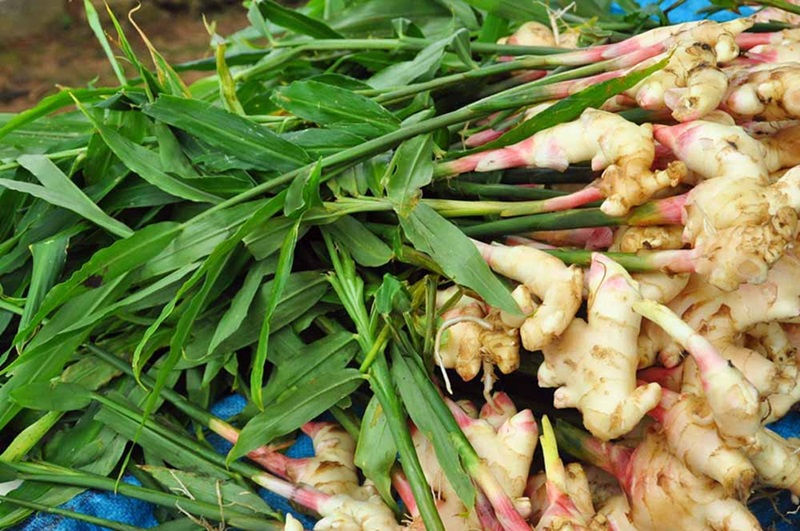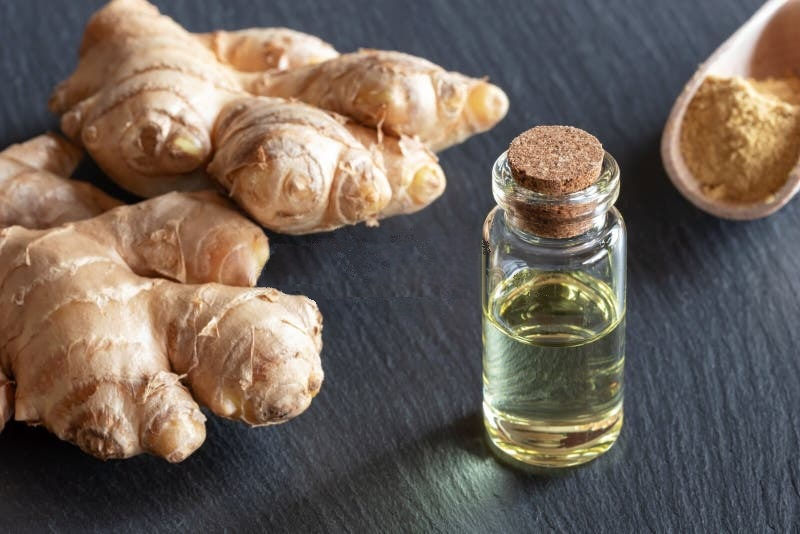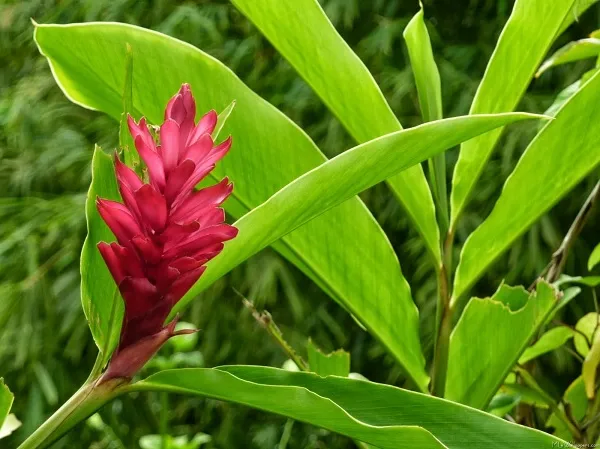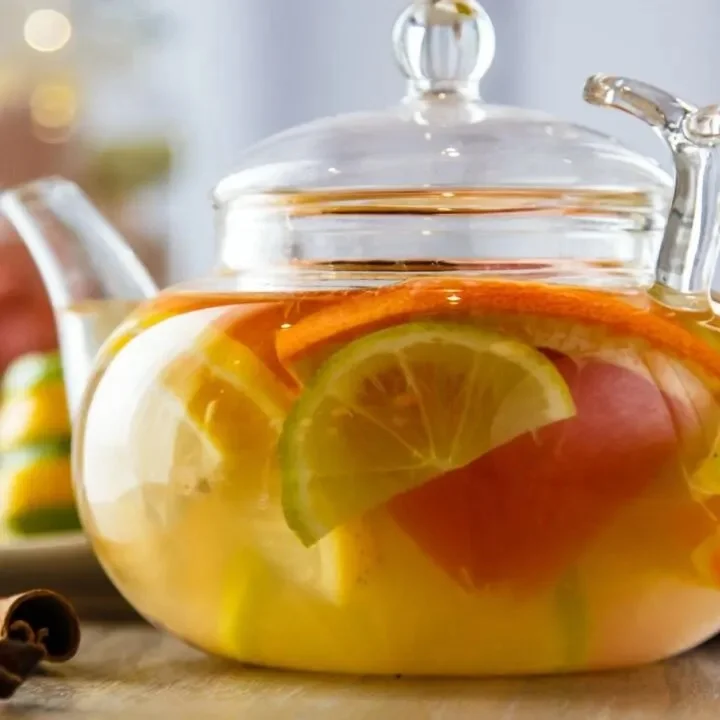🌱 Ginger: The Zesty Root That’s Not a Root
- ketogenicfasting

- May 1
- 4 min read
🌿 Ginger: The Zesty Super-Rhizome
✨ Chef’s Note
Chef Janine regularly uses ginger in various forms in her ketogenic Asian dishes, drawing on its bold flavor and wellness benefits.

🍽️ Culinary Uses
Essential in Thai, Chinese, and Indian cuisines
Used in main dishes, desserts, baked goods, and fancy drinks
Used grated fresh, in powder form, or as oil
Adds ginger’s distinctive, zesty flavor to dishes
In Japan, thin pickled slices of ginger are eaten to cleanse the palate


🌱 Ginger 101
Botanical name: Zingiber officinale
What we call the "root" is actually a rhizome
Nubs = leaf buds
Shoots and leaves are edible — great as seasoning
Native to South and Southeast Asia
Grows up to 4 feet tall in warm, humid regions

Grown in rather humid and warm regions, the ginger can grow up to four feet tall and has a long, reed-like shoot.
Although the cultivated varieties of ginger grown for culinary purpose are sterile and don’t flower, very few people know that this perennial plant has a beautiful foliage.

🌺 Ornamental vs. Culinary
Culinary ginger = sterile, doesn’t flower
Beautiful foliage, not often seen
🌿 Culinary ginger (Zingiber officinale) can bloom — but rarely
Ornamental ginger is non-edible and grown for its blooms
🌺 The blooms of certain ornamental ginger plants, particularly Zingiber zerumbet, also known as “shampoo ginger” or ‘Awapuhi’ in Hawaii, are used in natural shampoo and cosmetic production
While not all ornamental ginger flowers are aromatic, shampoo ginger is an exception — both functional and fragrant
🧴 Shampoo Ginger Highlights:
Thick, pinecone-shaped red bracts produce a milky, fragrant juice when squeezed — traditionally used as a natural conditioner or shampoo.
Popularized by Paul Mitchell in his “Awapuhi” product line.
The liquid is mildly cleansing, moisturizing, and gentle on the scalp.
Known for a light, earthy, gingery-floral scent — not overpowering, but fresh and clean.
🧪 Nutritional Value & Benefits
🌟 Nutrient/Compound | 💪 Benefit |
🧬 Gingerol | Anti-inflammatory, pain relief, circulation boost |
🛡️ Antioxidants | Fights free radicals, supports immunity |
🍽️ Dietary Fiber | Aids digestion, supports gut health |
🌡️ Thermogenic Effect | Slight metabolism boost |
🤢 Anti-Nausea | Eases morning sickness, motion sickness, and more |
💧 Hydration (as tea) | Helps during colds and flu |
🍵 Cold Remedy Ginger Tea Blend
Ginger is a powerful medicinal root packed with gingerol, a bioactive compound known to:
🌿 Reduce inflammation and pain
💓 Stimulate blood circulation
🤢 Alleviate nausea and vomiting
💪 Soothe sore muscles (topical use)
🛡️ Provide antioxidant support

🧪 At the first sign of cold or flu—runny nose, scratchy throat, cough—sip on this potent, soothing tea:
Ingredients:
Fresh ginger slices
Turmeric (fresh or ground)
Local raw honey 🍯
Fresh lemon juice 🍋
Simmer, strain, and sip.
Stores for up to 1 month in the fridge.
🧊 Storage Tips
Leave skin on to extend freshness
Wrap in paper towel + ziplock: lasts up to 2 weeks
Freeze sliced or whole rhizome for long-term use
Brewed tea can be stored up to 1 month chilled

US Regions Where Ginger Can Grow Year-Round:
Southern Texas and Louisiana
Florida
Southern and coastal California, Central Valley
Southern Arizona
Hawaii
In Riverside County, California, which has a hotter and drier inland climate compared to the coast, the ideal time to plant ginger is:
🌿 Late February through April
This gives ginger a warm but not scorching start before peak summer heat. Ginger loves warmth and humidity, but extreme dry heat (like July–August in Riverside) can stress young plants unless carefully shaded and watered.
✅ Tips for Planting in Riverside County:
Choose partial shade or filtered sunlight, especially during the hot summer months.
Mulch heavily to retain soil moisture.
Consider container growing, so you can move the plants to shadier spots or indoors during extreme heat.
🌱 How to Plant Ginger
Ginger can be grown directly in the ground or in pots (more on containers later). Follow these steps for healthy, thriving plants:
🛠️ Before Planting
Amend your soil with compost or aged manure if it's nutrient-poor.
Best time to plant: Early spring. In warmer climates, you can plant year-round.
✂️ Prepare the Rhizomes
Slice off ginger “fingers,” making sure each piece is 1–2 inches long with at least one visible bud.
Allow pieces to dry for 24–48 hours to help prevent root rot.
🌿 Planting
Space cut sections 12 inches apart, no deeper than 1 inch.
For commercial setups: Use double rows, spaced 1 foot apart, with a walking path in between.
Water thoroughly after planting.
💧 After Planting
Shoots should emerge in about 1 week.
Once growth appears, water deeply but sparingly to encourage strong roots without oversaturation.




Comments